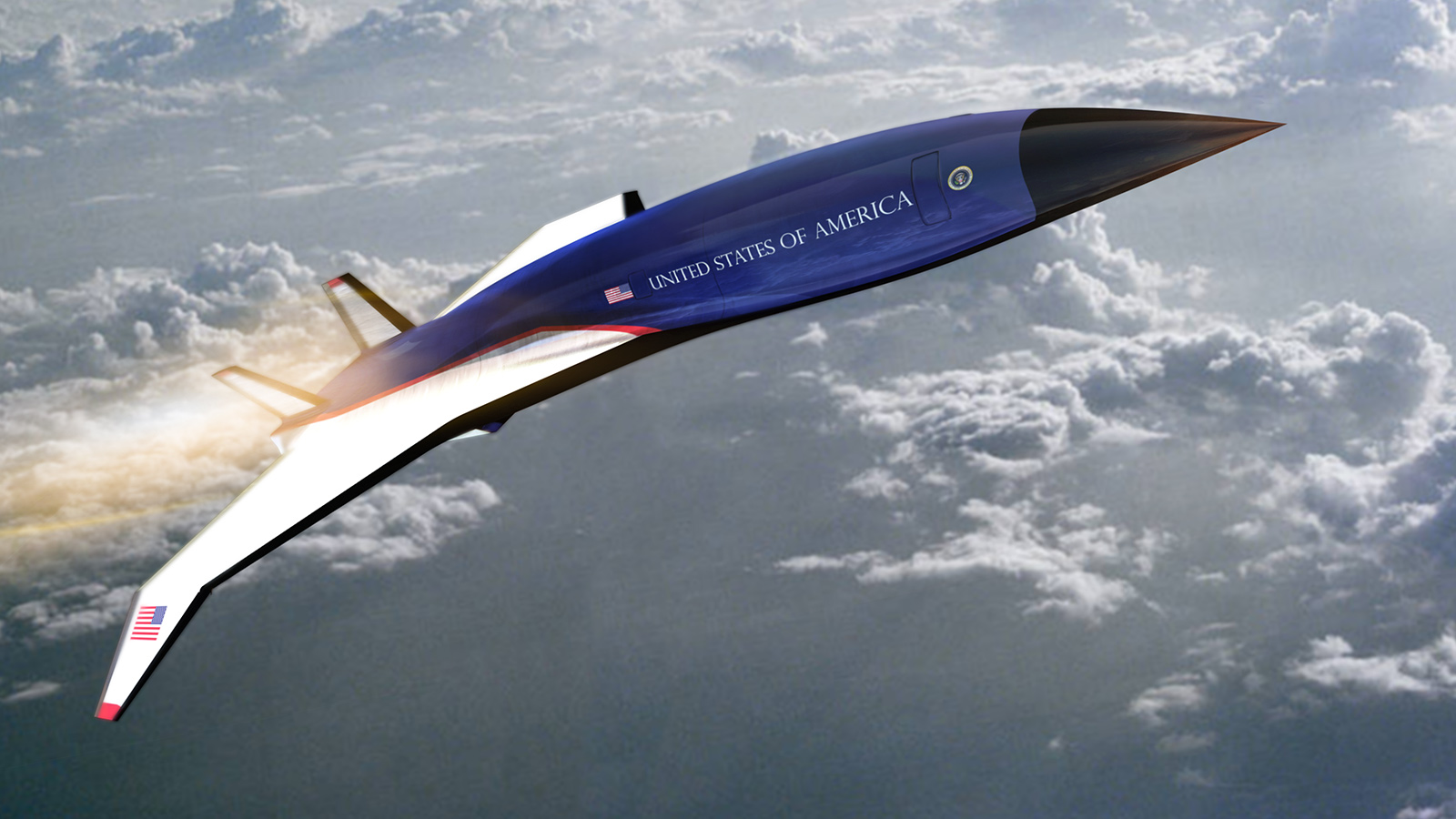Stay Up to Date
Submit your email address to receive the latest industry and Aerospace America news.
Startup Hermeus aims to show how its planned Mach 5 airliners could carry the U.S. president, diplomats, others
Today, the president of the United States and other high-ranking officials fly from here to there no faster than you and I do. Now, the U.S. Air Force, which manages today’s executive fleet of converted Boeing, Bombardier and Gulfstream jets, is looking into the feasibility of adding a Mach 5 plane to the mix.
Hermeus Corp. of Atlanta, a 2-year-old startup, announced today that it has received a 12-month, $1.5 million contract from the Air Force Presidential and Executive Airlift Directorate to study how its conceptual Mach 5 planes might someday join the U.S. government’s fleet. Hermeus has so far targeted the civilian air transport market.
Each 20-seat hypersonic plane would be powered by an undisclosed number of turbine-based combined cycle, or TBCC, engines. At lower speeds each engine would generate thrust just as a conventional turbine engine does, but at Mach 3 the TBCC would shift to ramjet mode in which air would be compressed for combustion by the speed of the aircraft, instead of with compressor blades.
Traveling at 5,000 kph or more, a hypersonic aircraft could drastically reduce the amount of time officials spend in the air, Hermeus CEO AJ Piplica told me in an interview. For instance, President Donald Trump’s trip to Tokyo last summer took 14 hours aboard the converted Boeing 747-200 that bears the call sign Air Force One.
“The less time [officials] spend in the air is more time on the ground going through those face-to-face interactions that are so important, especially when it comes to diplomacy or anything like that,” Piplica said.
But such an addition wouldn’t be for some time. If plans hold, the plane will not make its debut for another eight to 10 years, long after the planned 2024 entry-to-service of the newer variant of the Boeing 747 that will replace the current Air Force One planes.
Instead, Hermeus engineers will spend the next year determining the modifications that would be required for the planes to someday join the presidential and executive travel fleet. Piplica said he believes the delta wing configuration of the commercial plane could accommodate the advanced avionics and communications equipment required for the executive planes.
“I think [a hypersonic executive plane] is pretty well aligned with the commercial path that we’re taking,” Piplica said. “I don’t think we’re adding a completely new vehicle to that road map or taking a big detour.”
At the same time, research toward the passenger plane continues. Engineers in February wrapped up static fire tests of a TBCC engine prototype, “a good first step” to demonstrating the technology for a plane in the executive fleet, Piplica said.
If this design remains the same, the executive plane would be similar in size to the converted Gulfstream Vs and Gulfstream 550s in the current fleet, which typically carry cabinet secretaries and other officials for shorter trips within the U.S. But Piplica isn’t writing off the idea of a future Air Force One that can cruise at Mach 5.
“It’s certainly something that’s in the realm of possibility,” he said.
About cat hofacker
Cat helps guide our coverage and keeps production of the print magazine on schedule. She became associate editor in 2021 after two years as our staff reporter. Cat joined us in 2019 after covering the 2018 congressional midterm elections as an intern for USA Today.
Related Posts
Stay Up to Date
Submit your email address to receive the latest industry and Aerospace America news.




